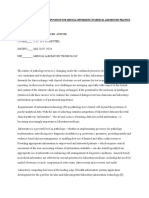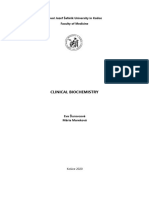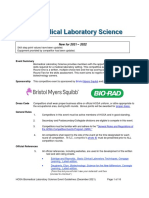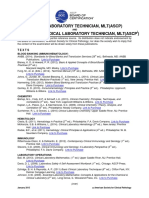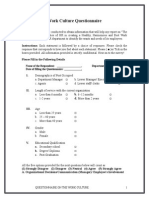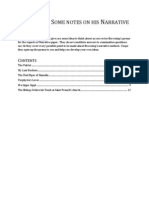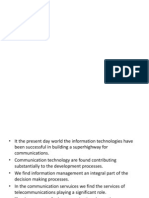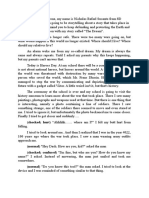0% found this document useful (0 votes)
82 views4 pagesAnalysis of On-Line Clinical Laboratory Manuals and Practical Recommendations
This document analyzes online clinical laboratory manuals and proposes recommendations for their content. The authors identified 48 online manuals from academic, commercial, and community laboratories. No single manual contained all 16 evaluated data elements. On average, manuals contained 8.9 of the elements. Basic sample requirements were most commonly included (98% of manuals), while other important elements like reference ranges were frequently absent. To maximize utility, the authors propose 13 key data elements that should be included in individual test listings, such as test name, methodology, sample requirements, reference range, and critical values.
Uploaded by
bhaskar04Copyright
© Attribution Non-Commercial (BY-NC)
We take content rights seriously. If you suspect this is your content, claim it here.
Available Formats
Download as PDF, TXT or read online on Scribd
0% found this document useful (0 votes)
82 views4 pagesAnalysis of On-Line Clinical Laboratory Manuals and Practical Recommendations
This document analyzes online clinical laboratory manuals and proposes recommendations for their content. The authors identified 48 online manuals from academic, commercial, and community laboratories. No single manual contained all 16 evaluated data elements. On average, manuals contained 8.9 of the elements. Basic sample requirements were most commonly included (98% of manuals), while other important elements like reference ranges were frequently absent. To maximize utility, the authors propose 13 key data elements that should be included in individual test listings, such as test name, methodology, sample requirements, reference range, and critical values.
Uploaded by
bhaskar04Copyright
© Attribution Non-Commercial (BY-NC)
We take content rights seriously. If you suspect this is your content, claim it here.
Available Formats
Download as PDF, TXT or read online on Scribd
/ 4




